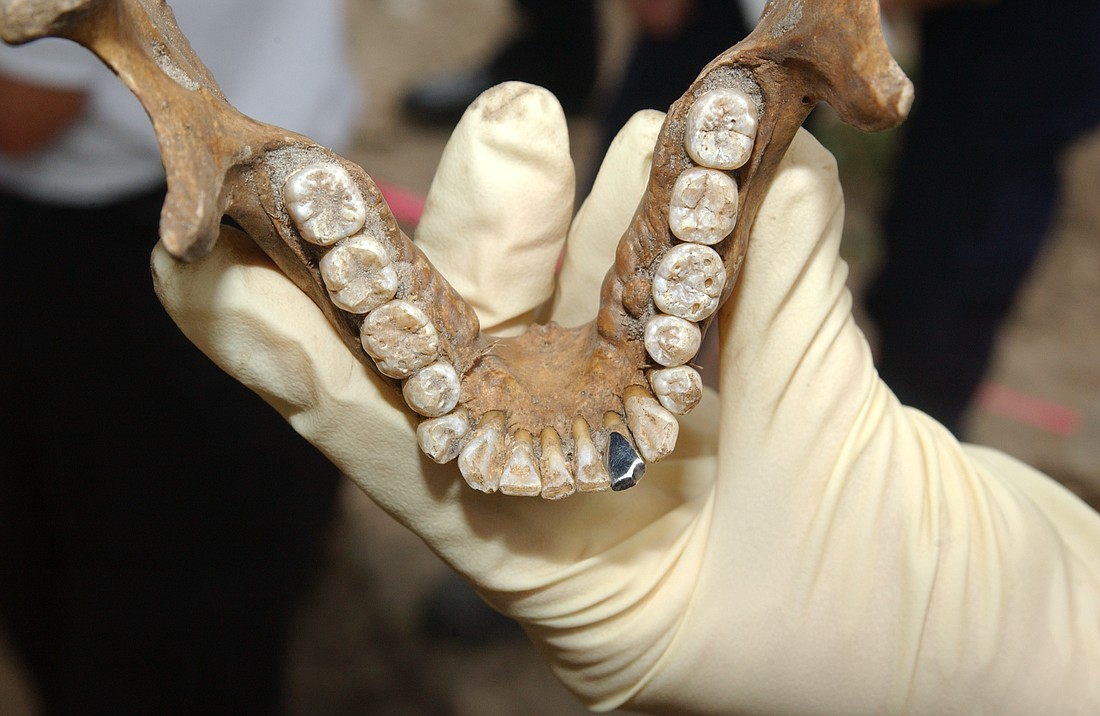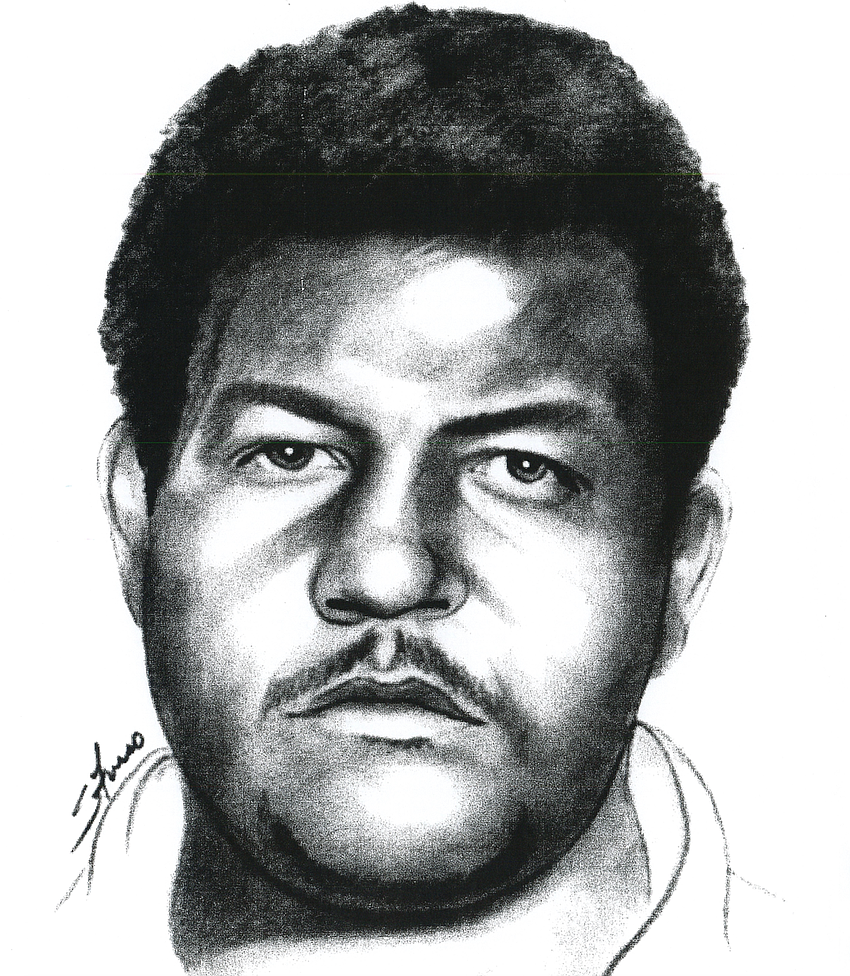- November 24, 2024
-
-
Loading

Loading

Dec. 8, 2004, started off just like any normal work day for Yovaish Engineering Sciences employees Andon Calhoun and Dennis Hartenstien.
The crew was working in a vacant field off Daniels Road, just west of the entrance to the Regency Oaks subdivision, in Winter Garden.
A trench with a blue water line in it, just west of the water tower, first attracted Calhoun’s eye. His vision then drifted south to a palmetto tree.
That’s when he saw it: a set of bones resting under the tree.
REMAINS FOUND
It’s been almost 20 years since the remains were found, and the Winter Garden Police Department still has not been able to identify the mysterious bones.
According to the original police report, Calhoun contacted the WGPD immediately when he saw the bones. He said he did not disturb the area around the bones or the bones themselves.
Hartenstein was helping Calhoun locate the proposed location for a dig test. He said he and Calhoun were walking when Calhoun noticed the bones under the tree. Hartenstein also said he did not touch the bones.
The scene was turned over to then-Detective Scott Allen upon the WGPD’s arrival.
Capt. Allen, who now serves as a public information officer for the WGPD, assisted with digging up the bones.
A belt, undershorts and pants were found on the body.
Allen said the person was bound with the cords for window blinds and small extension cords around the ankles and wrists, and the person did not match any missing cases or other open cases the department had.
The Florida Department of Law Enforcement also joined the WGPD on the scene. The scene and investigation were turned over to FDLE investigator Kristie Shaw, before FDLE agent Kevin Bass was assigned lead investigator.
Allen said shotgun pellets were found by FDLE, but it could not be determined if the pellets were related to the case because of the vast area dug up.
Allen said there have been a few situations over the years where development has been occurring and remains have been uncovered.
“It’s not uncommon, with all the construction that goes on around the area, for dirt to be moved from one location to another location and something is found,” he said. “This is the only case that I can think of where we have buried bones that have come back. Obviously, a crime has been committed somewhere based on this not being a regular grave and this person being bound. … This was when Winter Garden was all under construction. At the time, there was a big water tower for the groves in the vicinity. I believe that the water tower was removed and restored and now is at this subdivision off of Plant Street. I don’t know if anyone has knowledge of someone that was buried near a big, wood water tower near the orange groves.”
The case remains open pending identification of the bones.

VICTIM ANALYSIS
After the bones were recovered, the remains were sent to the medical examiner’s office.
Jan Garavaglia was the chief medical examiner with Florida’s District Nine Medical Examiner’s Office at the time. The office worked closely with the University of Central Florida and determined the jaw of the person was of a black or Hispanic male.
The unidentified person was estimated to have died in 2004.
The victim was estimated to be between the ages of 36 and 45 and to be about 5 feet, 6 inches tall.
The victim had a fracture of the left radius and ulna as well as a well-healed fracture above the left eye orbit and may have had some possible back problem. During his lifetime, his nose likely appeared crooked.
The lower jaw of the unidentified subject contained a silver tooth, which may be one of the biggest indicators when identifying the victim.
The jaw was sent to an odontologist — a person who studies the structure and diseases of teeth to identify people and help solve crimes — but came back with nothing.
The skull of the subject also was sent to Erin Kimmerle, an anthropologist at the University of South Florida.
Kimmerle believes the victim was more likely Hispanic than black and said his main diet appeared to be corn.
DNA eventually was recovered from the victim’s ribs and was entered in the FBI’s Combined DNA Index System.
A National Missing and Unidentified Persons System case was created April 7, 2008.
SEEKING CLOSURE
“It was an exhaustive search by both these guys here (the WGPD) and FDLE of any and all missing people that look like this,” Sgt. David Clarke said. “Plus, of course, you have family members that call in thinking it’s their loved one. All that came up with nothing.”
Clarke even personally traveled looking for possible identifications.
“I thought I had a real close identification of him,” he said. “It was a subject up in the Carolinas. He had a broken left wrist, he was of Indian/Hispanic descent, all that. It turned out it wasn’t him. We’ve made quite the effort to identify this guy.”
Clarke also said he reached out to recently retired Ocoee Police Department detective Michelle Grogan because one of the department’s cold case subjects, Ernest Manzanares, also had a broken left arm. However, the DNA extraction has not been completed yet.
“We run into a lot of situations where individuals may not feel comfortable coming to the police with information,” Allen said. “There could be people out there who know who this person is but aren’t comfortable saying anything. We’ve been really trying to rely on science to get this person identified. … Not all crime is reported. As of today, we have nothing in our files. No missing people or cases that would involve this.”
Allen said every detail when it comes to the subject is important and the department is looking for anyone with possible recognition of the identifying factors or information to come forward.
“The part that keeps us going is that we know we’ve done all we can do on our side, and we will continue to do that,” Allen said. “Even with changes in technology and stuff like that; that’s why we keep these cases open. When things change, we look at the ability of possibly doing something extra or new if we can. We would like to give some closure to somebody, because someone is missing a loved one.”